2017 Kawasaki Jet Ski SX-R Review
We finally get take the new SX-R for a ride
Familiar, yet fresh, Kawasaki’s newest creation has a legitimate shot at resurrecting the standup market.
Engine: Three-cylinder 1,498cc
Fuel Capacity: 6.1 gal.
Curb Weight: 551.3 lbs
MSRP: Starting at $9,999
When the last Kawasaki standup model rolled off the assembly line in 2011, it seemed like an era had come to an anticlimactic end. Emissions laws drew much of the blame at the time, as standups were the last models to cling to a two-stroke powerplant. The harsh reality, however, was that enthusiasm for these single-rider models had already sunk to an all-time low. Runabouts were king, and few in the OEM market saw the payoff in investing the time and money necessary to reimagine a four-stroke alternative.
Luckily for standup enthusiasts, not everyone was quite so pessimistic. Two in particular – Kawasaki’s Minoru Kanamori and Craig “Fuzzy” Boyd – continued to tinker and daydream in their spare time. After six years, their work behind the scenes has paid off. For 2017, Kawasaki is once again back in the standup business.
And this time around, enthusiasm is high.
Supersize Me
That the Kawasaki Jet Ski SX-R is unlike any OEM standup to come before is obvious not just from the engine within, but from the very first glance at the shell that contains it. To put it bluntly, the SX-R is big, measuring up at about 8’ 9” in length (versus only 7’ 6” for the previous model and 7’ 4” for Yamaha’s SuperJet) and 30” in width. Out of the water the impression is even more dramatic, as there is considerable hull depth below the bondline. Above, the craft resembles previous SX-Rs in profile, but sports a longer, sharper nose, with more real estate ahead of the handlepole hinge. Get up close, however, and that shape changes, revealing a wide, flared bow shape that take the craft’s looks in a whole other direction. It’s different, it’s modern, and undoubtedly aggressive.
Integrated splash deflectors are molded into the hull forward to knock down spray. Aft, runabout-style sponsons have been added to lock down the hull when tightly cornered. Elsewhere, other traits are quite familiar. The handlepole, while obviously beefed up for the application, is lifted almost directly from the previous SX-R, but updated with a motocross-style, cylindrical handlebar pad and both fuel-warning and engine-warning lights integrated into the sleek handlepole cushion. Kawasaki’s now-familiar magnetic key system is found just below the hood latch on the left. The rider tray remains outfitted with Hydro-Turf on the bottom and inside of the deck fins, but is squarer in shape and larger (34” x 16”) than previous designs. It also slopes forward, rather than running flat, to provide a slightly more aggressive platform. Deck fins are streamlined compared to the standups of old, with a less angular shape where they contact the rider’s legs to facilitate bracing against the sides of the tray. Fin tops, however, are left unpadded.
Minimal storage is found atop the hood cover below where the handlepole rests. It’s rather simple, a rubbery, mesh panel that clips in place atop a shallow indent in the fiberglass, perfect for securing a dock or tow line. During Kawi’s press event, reps placed the magnetic keys under the cover. On my first fall they actually fell out, but it never happened the remainder of the day. The hood latch located below is similar to that found on previous models, a catch that locks with a twist.
The Long-Awaited Four Stroke
The long-awaited four-stroke engine below isn’t new, but rather borrowed from the long-running STX-15F. A fuel-injected, 1,498cc inline four-cylinder, it offers twice the power of the previous 800 standup model and produces 957 pounds of thrust. That’s a lot of power, even with the craft’s vastly increased 551-pound curb weight. The engine is positioned as low as possible in the hull, and as aft as possible, reportedly to allow the hull to better penetrate waves and deliver less shock to the rider. The impeller is likewise borrowed from the STX-15F, and encased within a 148mm pump. The muffler is slimmer and designed to fit into the tighter hull confines. Balancing the engine and rider weight is the six-gallon fuel tank, located far forward toward the nose of the craft.
As to the engine’s performance in this application, yank the throttle and you’ll find impressive acceleration, enough to actually outperform Kawasaki’s Ultra 310R out of the hole. In a 50-meter drag race, it leaves the previous 800 SX-R a full 19 meters behind by the finish. The craft topped out just over 60 mph on our test day; Kawi testers indicate they’ve seen as high as 62 mph in ideal conditions.
Dual-Personality Handling
In terms of handling, things feel familiar – and different – from the very first moment. First impressions from most riders will likely be that the craft is very stable and buoyant before you even apply the throttle. Climb aboard and scoot up to your knees in deeper water and the stern doesn’t sink down and get tippy like all standups that have come before, but rather stays mostly level to the water. This makes it a little more challenging to haul yourself aboard (having the stern submerge had its benefits), but once on your knees in the tray there’s tremendous stability. Even larger riders were able to get onto their knees and feel stable and relatively level before power was applied. Try that on any model that has come before.
Once you turn your attention to the throttle, the power is obvious. Acceleration is rocket strong, with little-to-none of the porpoising that affects most standup models. Instead, the bow stays down and the craft simply takes off. The hull is more stable in the waves than any previous model, slicing through without hesitation and even handling wakes from the side with relative ease. The 2017 Kawasaki Jet Ski SX-R is also more stable at high speeds, allowing riders to easily stay atop the craft at runabout-style speeds. This is, however, still a standup. Get careless and let your weight drift too far to the side and even an experienced rider will get pitched. Or, uh, so I’ve heard. When you do, expect a little longer swim than usual. At the speeds the SX-R is capable of, it takes a little longer to coast to a stop.
It’s not the power, but rather the craft’s cornering ability that left a lasting impression on this rider. I’ve never ridden a stock OEM standup model that stays this glued to the water during an aggressive turn. Crank the bars, shift your weight to the inside of the turn, and the hull simply grips and rips. It’s confidence inspiring. Credit the hull, but also the addition of those runabout-style sponsons for much of the success. It’s a trait that will allow novice riders to progress much faster, but at the same time reward experienced pilots who want to continually push the craft’s limits.
Interestingly, while I personally preferred to lean the hull far over and really throw my body to the inside of turns, the hull also turned well when ridden flat. In fact, I rarely got the ski to slide or spin out no matter the positioning. That may limit the boat’s freestyle potential, but it certainly makes it better for novice riders, as well as the vast majority of experienced riders who prefer to mostly carve aggressive turns and blast ahead in straight-line speed runs.
Call It A Comeback?
It’s this dual personality of the SX-R that left the lasting impression. Primarily I would sum it up as a performance model; a powerful machine that rails through corners with graceful, yet brutal efficiency and achieves acceleration and top speed numbers that compare with high-performance runabouts. Yet at the same time, the Kawasaki Jet Ski SX-R is also that long-awaited four-stroke model that is more stable and forgiving for beginners, and actually practical for larger riders previously excluded from a standup’s thrills.
True, it’s not for everyone. If you’re looking for a playful, lightweight freestyle craft, this isn’t the boat for you. But if you’re looking for a craft that may actually have a chance of reigniting the passion for standup watercraft from a wider audience, the Kawasaki Jet Ski SX-R is right on target.
Welcome back, Kawasaki. We’ve missed you.
Get PersonalWatercraft.com in your Inbox!
Like PersonalWatercraft.com on Facebook
Comments
Most Popular

2024 Kawasaki Jet Ski STX 160X Review

2025 Yamaha JetBlaster PRO 2-Up Review

Remembering the Sea-Doo XP

Electric Sea-Doo Coming By 2026

Whatever Happened to the Wetbike?






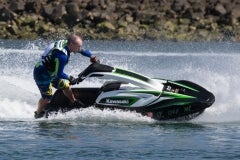









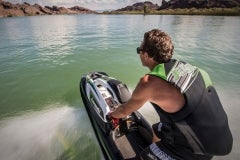

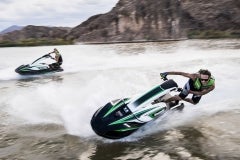
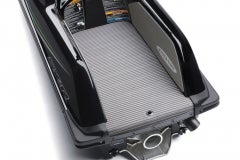




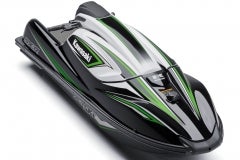
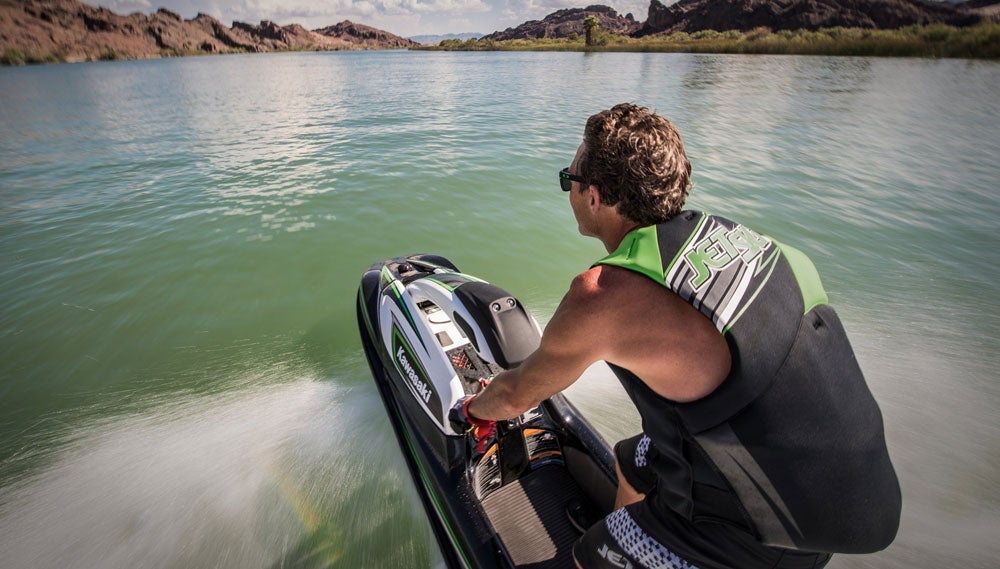














 Your Privacy Choices
Your Privacy Choices